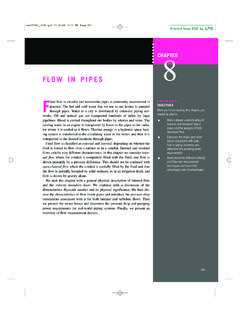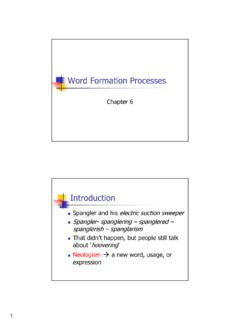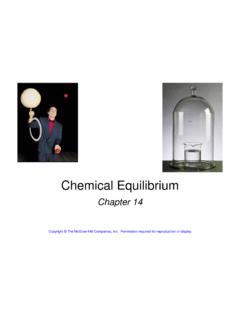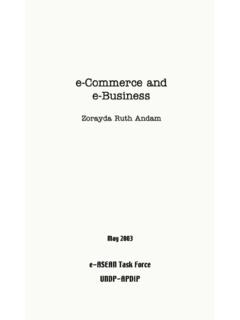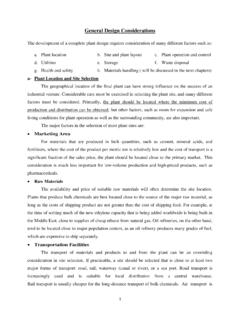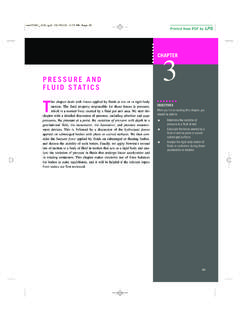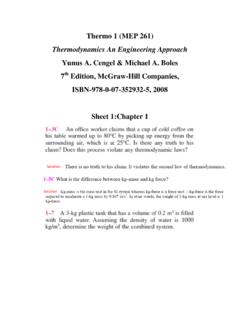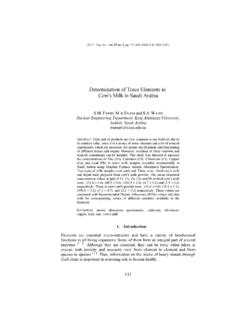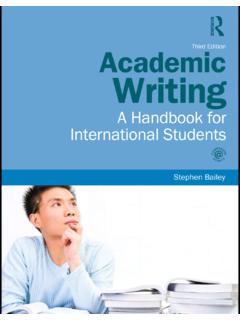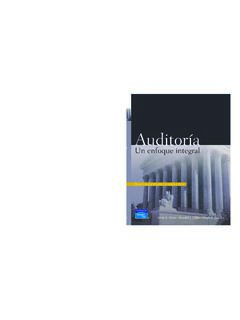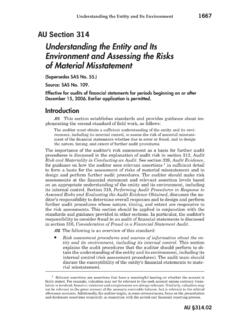Transcription of Chapter 7 – Audit Evidence
1 2010 Prentice Hall Business Publishing, Auditing 13/e, Arens/Elder/Beasley 7 - 1 Chapter 7 Audit Evidence 2010 Prentice Hall Business Publishing, Auditing 13/e, Arens//Elder/Beasley 7 - 2 Learning Objective 1 Contrast Audit Evidence with Evidence used by other professions. Evidence : any information used by the auditor to determine whether the information being audited is stated in accordance with the established criteria. 2010 Prentice Hall Business Publishing, Auditing 13/e, Arens//Elder/Beasley 7 - 3 Nature of Evidence The use of Evidence is not unique to auditors Evidence is also used by scientists, lawyers, and historians all use Evidence to help them draw conclusions.
2 2010 Prentice Hall Business Publishing, Auditing 13/e, Arens//Elder/Beasley 7 - 4 Learning Objective 2 Identify the four Audit Evidence decisions that are needed to create an Audit program. 2010 Prentice Hall Business Publishing, Auditing 13/e, Arens//Elder/Beasley 7 - 5 Audit Evidence Decisions 1. Which Audit procedures to use 2. What sample size to select for a given procedure 3. Which items to select from the population 4. When to perform the procedures (timing) about what Evidence to gather and how much of it to accumulate: detailed instruction that explains the Audit Evidence to be obtained during the Audit vary the sample size from one to all the items in the population being tested Methods can be used to select the specific items to be examined vary from early in the accounting period to long after it has ended.
3 In part, the timing decision is affected by when the client needs the Audit to be completed. 2010 Prentice Hall Business Publishing, Auditing 13/e, Arens//Elder/Beasley 7 - 6 Audit Program It includes a list of the Audit procedures the auditor considers necessary. Most auditors use computers to facilitate the preparation of Audit programs. Sample sizes Items to select Timing of the tests 2010 Prentice Hall Business Publishing, Auditing 13/e, Arens//Elder/Beasley 7 - 7 Learning Objective 3 Specify the characteristics that determine the persuasiveness of Evidence . 2010 Prentice Hall Business Publishing, Auditing 13/e, Arens//Elder/Beasley 7 - 8 Persuasiveness of Evidence Appropriateness Sufficiency is a measure of the quality of Evidence , meaning its relevance and reliability in meeting Audit objectives selecting Audit procedures that Are relevant to the Audit objective that the auditor is testing when the auditor traced from the duplicate sales invoices to related shipping documents, the Evidence was relevant for the occurrence transaction objective tracing from shipping documents to sales invoices, the auditor can determine whether shipments have been billed to customers.
4 Relevant for completeness The quantity of Evidence obtained determines its sufficiency. 2010 Prentice Hall Business Publishing, Auditing 13/e, Arens//Elder/Beasley 7 - 9 Six Characteristics of Reliable Evidence of provider 2. Effectiveness of client s internal controls 3. Auditor s direct knowledge refers to the degree to which Evidence can be believable or worthy of trust Evidence obtained from a source outside the entity is more reliable than that obtained from within. When a client s internal controls are effective, Evidence obtained is more reliable than when they are weak. Evidence obtained directly by the auditor through physical examination, observation, recalculation, and inspection is more reliable than information obtained indirectly 2010 Prentice Hall Business Publishing, Auditing 13/e, Arens//Elder/Beasley 7 - 10 4.
5 Qualification of individuals providing the information the individual providing Evidence must be qualified of objectivity Objective Evidence is more reliable than Evidence that requires considerable judgment to determine whether it is correct. the qualifications ofthe person providing the Evidence in subjective Evidence . 6. Timeliness Evidence is usually more reliable for balance sheet accounts when it is obtained as close to the balance sheet date as possible For income statement accounts, Evidence is more reliable if there is a sample from the entire period under Audit , such as a random sample of sales transactions for the entire year 2010 Prentice Hall Business Publishing, Auditing 13/e, Arens//Elder/Beasley 7 - 11 Persuasiveness and Cost In making decisions about Evidence for a given Audit , both persuasiveness and cost must be considered.
6 The auditor s goal is to obtain a sufficient amount of appropriate Evidence at the lowest total cost. 2010 Prentice Hall Business Publishing, Auditing 13/e, Arens//Elder/Beasley 7 - 12 Learning Objective 4 Identify and apply the eight types of Evidence used in auditing. 2010 Prentice Hall Business Publishing, Auditing 13/e, Arens//Elder/Beasley 7 - 13 Types of Audit Evidence 1. Physical examination 2. Confirmation 3. Documentation 4. Analytical procedures 5. Inquiries of the client 6. Recalculation 7. Reperformance 8. Observation 2010 Prentice Hall Business Publishing, Auditing 13/e, Arens//Elder/Beasley 7 - 14 Physical Examination It is the inspection or count by the auditor of a tangible asset.
7 This type of Evidence is most often associated with inventory and cash. verifying that an asset actually exists (existence objective) verifying existing assets are recorded (completeness objective). the most reliable and useful types of Audit Evidence 2010 Prentice Hall Business Publishing, Auditing 13/e, Arens//Elder/Beasley 7 - 15 Confirmation Information Source Assets Cash in bank Marketable securities Accounts receivable Notes receivable Owned inventory out on consignment Inventory held in public warehouses Cash surrender value of life insurance Bank Customer Maker Consignee Public warehouse Insurance company Investment custodian the receipt of a direct written response from a third party verifying the accuracy of information that was requested by the auditor.
8 They are a highly regarded and often-used type of Evidence . most costly 2010 Prentice Hall Business Publishing, Auditing 13/e, Arens//Elder/Beasley 7 - 16 Confirmation Information Source Liabilities Accounts payable Notes payable Advances from customers Mortgages payable Bonds payable Creditor Lender Customer Mortgagor Bondholder 2010 Prentice Hall Business Publishing, Auditing 13/e, Arens//Elder/Beasley 7 - 17 Confirmation Information Source Owners Equity Shares outstanding Registrar and transfer agent Other Information Insurance coverage Contingent liabilities Bond indenture agreements Collateral held by creditors Insurance company Bank, lender, and client s legal counsel Bond holder Creditor 2010 Prentice Hall Business Publishing.
9 Auditing 13/e, Arens//Elder/Beasley 7 - 18 Documentation It is the auditor s inspection of the client s documents and records. Internal documents External documents 2010 Prentice Hall Business Publishing, Auditing 13/e, Arens//Elder/Beasley 7 - 19 Internal document has been prepared and used within the client s organization and is retained without ever going to an outside party. Internal documents include duplicate sales invoices, employees time reports, and inventory receiving reports External document has been handled by someone outside the client s organization who is a party to the transaction being documented, but which are either currently held by the client or readily accessible vendors invoices, cancelled notes payable, and insurance policies External one is more reliable than Internal documents Internal documents created and processed under effective internal control is more reliable than conditions of weak internal control Original documents are considered more reliable than photocopies or facsimiles.
10 When auditors use documentation to support recorded transactions or amounts, the process is often called vouching 2010 Prentice Hall Business Publishing, Auditing 13/e, Arens//Elder/Beasley 7 - 20 Analytical Procedures Understand the client s industry and business (highlighted any changes) Assess the entity s ability to continue as a going concern (assess the likelihood of failure) Indicate the presence of possible misstatements in the financial statements Reduce detailed Audit tests use comparisons and relationships to assess whether account balances or other data appear reasonable compared to the auditor s expectations. Significant unexpected differences. Unusual fluctuations analytical procedure reveals no unusual fluctuations, this implies the possibility of a material misstatement is mi nimized.
